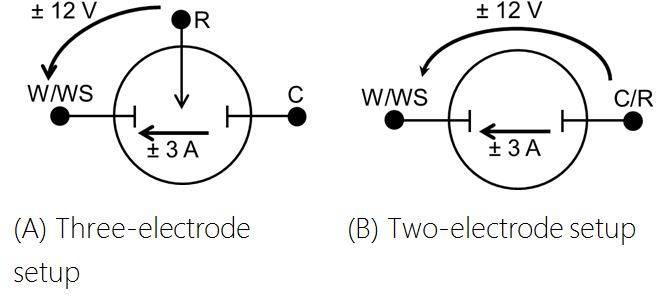Some researchers want to be able to apply or measure voltages larger than 12 V. One example of the need for larger potentials is battery testing, while another might be CV inside small microfluidic channels. Perhaps you want to perform certain types of electrodeposition experiments. In these instances you may need to look a little harder for a potentiostat that can operate at these higher voltages.
All Reference™ 3000 potentiostats are able to measure and apply voltages and currents up to the compliance limit. The compliance limit is the output limit of the control amplifier. What is the control amplifier? The control amplifier is an operational amplifier within the potentiostat used to drive the counter electrode in order to achieve the desired voltage between a reference electrode and a working electrode. Higher power means larger voltages and currents, but this comes at a cost though: more power means more heat dissipation, larger instruments, and additional cost.
For those that need higher voltages, the Reference 3000 has some unique advantages you should know and understand. The Reference 3000 has two compliance ranges: ±15 V at ±3 A, or ±32 V at ±1.5 A. Under normal circumstances, the Reference 3000 can apply and measure up to 12 V. This is done in the 15 V compliance range. Connections to the cell are standard and shown in Figure 1A. Working/Working sense leads are connected to the Working electrode; the Counter lead attaches to the Counter electrode, and the Reference lead goes to the Reference electrode. In two-electrode mode, the Working and Working Sense are connected to the working electrode and the Reference and Counter are connected to the counter electrode as show in Figure 1B.

Figure 1. Normal operation of a Reference™ 3000 in 3-electrode (A) or 2-electrode (B) modes. Voltages < ±12 V. Reference lead is connected to Floating Ground.
Read the complete Technical Note at Gamry.com.
